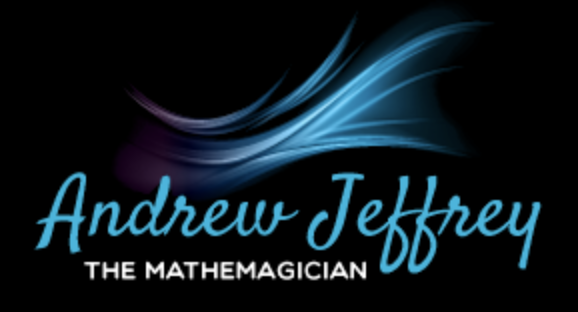Shape Up Conference 2024, part 4: Thursday (pm)
Late again…I’ve managed to be late for every single session so far today. Well done me.
After lunch I spent a very pleasant half an hour chatting with Chris Ingram, founder of the fabulous Autopress Education. Chris and I go way back to BEAM days (remember them?!) and I am constantly using and recommending their resources to teachers.
I got so engrossed talking to Chris and her colleagues that I didn’t notice 2pm come and go! Oops – quick jog to what turned out to be an absolutely fascinating session on visualisation from Priya Shah.
It’s hard to put into words just how fascinating this was. We started by writing down our own definition of visualisation.
We then did three activities, and after each one we revisited our definition to see if we wanted to amend it.
The activities were: throw and catch stones without looking, imagine cutting a slice from a cube, and recalling what comes to mind when we see the number 30.
Amazingly, each time I felt I needed to amend my definition. Priya showed clips of this video from Andrew Huberman.
For me the most fascinating thing of all was our discussion around Aphantasia – the inability of between 5 and 15% of the population to mentally visualise.
But this is a very nuanced idea, as you might not be able to visualise ‘door’, but you would be able to visualise ‘your front door.’
I love things that make me think, and this session really, really did that. There are clearly very important implications for the way we teach abstract concepts in mathematics. I know I will be thinking a lot about adapting my practice in the coming days.
In a nutshell, visualisations needs to be short – 15 seconds or less, and there needs to be both physical and mental practice – physical, explains Huberman, is more important and effective.
Priya finished with some examples of how this information might impact our practice.
- Y6 students anxious about making friends when they went to secondary. Story about going to a shop with a £2 coin. Buy a £1.20 drink and a 59p snack; imagine handing over the £2 coin and receiving change. Seeing the change in your hand – what do you see?
- Focused Eyes: Does the learner see what you see? Does the learner see what you want them to see? In this scenario, children were using formal written methods. A girl who was struggling was invited to visualise a Place Value chart. She closed her eyes and was unable to do so. However, when she repeated the attempt but this time tracing her finger down each column saying ‘thousands, hundreds, tens ones’, she found that she WAS able to see the columns in her head. By the fourth example, she did not even need to close her eyes and could successfully perform the calculations.
- The final example involved the area model of multiplication – the story Priya told was about children working out 7 x 6 by thinking of it as two rectangles; one was 7 by 5, and the other was 7 by 1. The combination of visualisation, movement, and language allowed the children to build confidence and understanding.
So much food for thought – I am already thinking about changes I can make to my own teaching next term…
I wondered about getting a sneaky swim in but decided instead to go to Nira Chamberlain’s talk, entitled ‘Mathematics is indisputably the greatest subject in the world.’
Big claim, but given the makeup of his audience, I doubted he would get too much opposition…
Nira was characteristically entertaining, regaling his audience with stories of his attempts to convince various media outlets of the beauty and relevance of maths.
I admit to a fair bit of shirt envy too, but that’s my problem and nothing for you to worry about. There were a lot of video clips in Nira’s talk which made it feel very fast-paced. I liked one in particular which modelled ways in which normal distribution appeared in the ‘real world’ – whatever the ‘real world’ is, I guess…
COVID: Nira talked about the role that mathematics played in advice given to, and decisions taken by, government officials during the pandemic. I enjoyed the story of how Nira used the story of Goldilocks to explain to an MOD committee how to get the QEII built, as a metaphor using a system of equations.
The point about maths being relevant was an important one. Nira used the example of MH370, the Malaysian Airlines plane that disappeared in 2014. He talked about Laplace predicting black holes in space – something that Chat GPT would not be able to do!
There was much laughter about whether or not maths could save Aston Villa from relegation, or predict who they would play in the playoffs. A tongue-in-cheek segment, but very amusing!
Nira finished by talking about the financial crisis of 2008 and the applications of maths to predicting human behaviour. None of us like to think that our behaviour is predictable by maths, but Nira suggested that by studying micro-behaviour it IS indeed possible to predict and even change behaviour at a a macro level. I’m not quite convinced about the relevance of maths in the commuter experiment, but the flash mob video was very funny – and some of the commuters did indeed join in. I did like the closing point: don’t just focus on what maths WAS used for; inspire them by what it WILL BE used for.
Time for a short break now, so I’ll post this episode before the AGMs and the legendary quiz (If anyone doesn’t feel they wish to attend, there is an alternative- another chance to listen to Rob Eastaway talk about Shakespeare and maths at the Guidhall instead).
See you next time!
